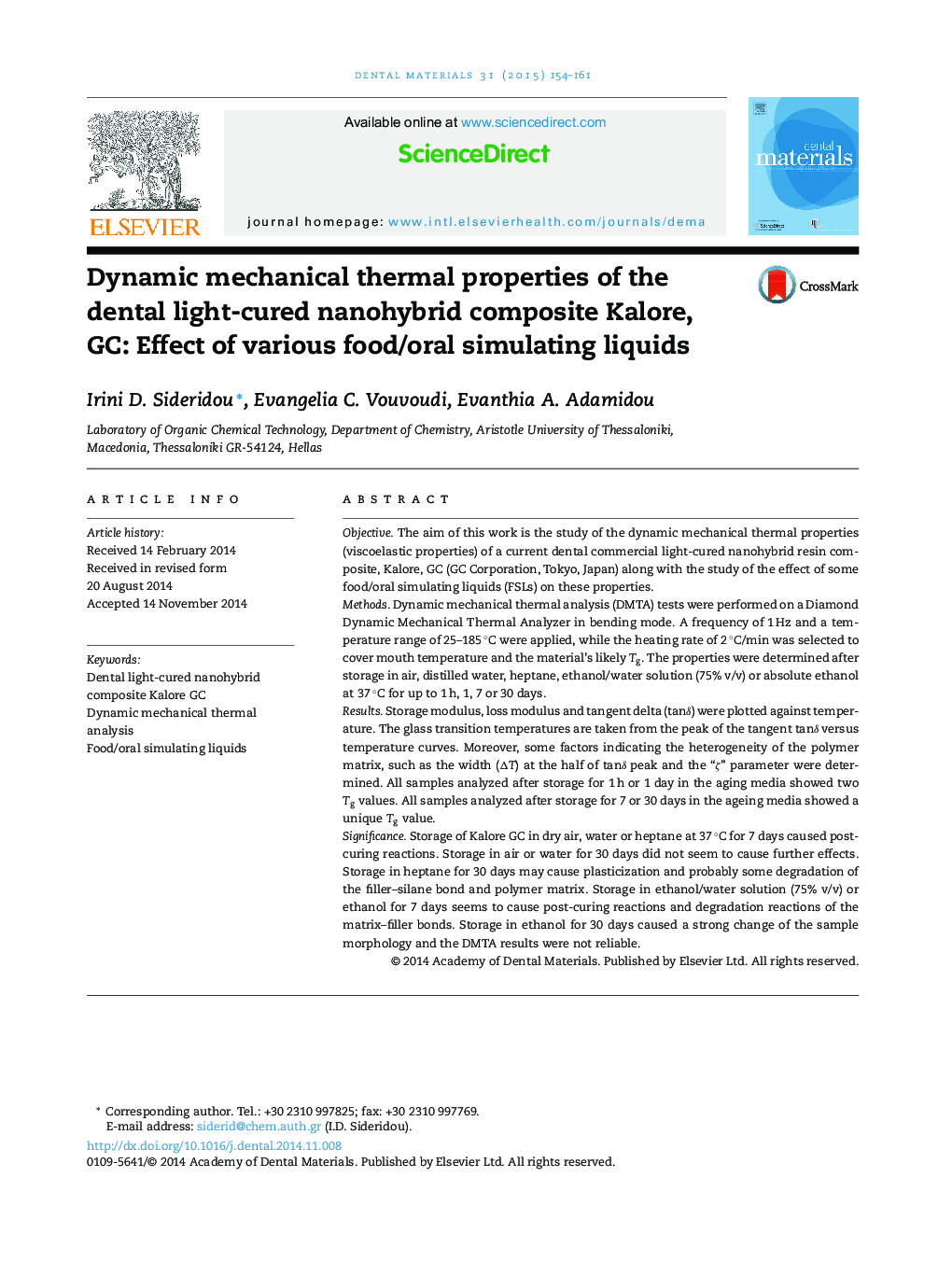| کد مقاله | کد نشریه | سال انتشار | مقاله انگلیسی | نسخه تمام متن |
|---|---|---|---|---|
| 1420612 | 986375 | 2015 | 8 صفحه PDF | دانلود رایگان |

ObjectiveThe aim of this work is the study of the dynamic mechanical thermal properties (viscoelastic properties) of a current dental commercial light-cured nanohybrid resin composite, Kalore, GC (GC Corporation, Tokyo, Japan) along with the study of the effect of some food/oral simulating liquids (FSLs) on these properties.MethodsDynamic mechanical thermal analysis (DMTA) tests were performed on a Diamond Dynamic Mechanical Thermal Analyzer in bending mode. A frequency of 1 Hz and a temperature range of 25–185 °C were applied, while the heating rate of 2 °C/min was selected to cover mouth temperature and the material's likely Tg. The properties were determined after storage in air, distilled water, heptane, ethanol/water solution (75% v/v) or absolute ethanol at 37 °C for up to 1 h, 1, 7 or 30 days.ResultsStorage modulus, loss modulus and tangent delta (tanδ) were plotted against temperature. The glass transition temperatures are taken from the peak of the tangent tanδ versus temperature curves. Moreover, some factors indicating the heterogeneity of the polymer matrix, such as the width (ΔT) at the half of tanδ peak and the “ζ” parameter were determined. All samples analyzed after storage for 1 h or 1 day in the aging media showed two Tg values. All samples analyzed after storage for 7 or 30 days in the ageing media showed a unique Tg value.SignificanceStorage of Kalore GC in dry air, water or heptane at 37 °C for 7 days caused post-curing reactions. Storage in air or water for 30 days did not seem to cause further effects. Storage in heptane for 30 days may cause plasticization and probably some degradation of the filler–silane bond and polymer matrix. Storage in ethanol/water solution (75% v/v) or ethanol for 7 days seems to cause post-curing reactions and degradation reactions of the matrix–filler bonds. Storage in ethanol for 30 days caused a strong change of the sample morphology and the DMTA results were not reliable.
Journal: Dental Materials - Volume 31, Issue 2, February 2015, Pages 154–161